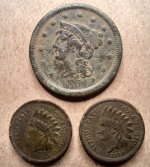As follows: we have recently started a small business in a very remote part of the world which has, by default, facilitated observation of artisanal small scale gold mining activities in the area. This is not a new activity in these parts and is certainly not conducted in a manner that subscribes to environmental or social best practices. While we are not interested in promoting this state of affairs we are curious to know if there is a real opportunity to recover some alluvial gold responsibly without spending a fortune in the process.
This artisanal activity, which is taking place on a typical greenstone belt deposit, consists of local folk digging pits and grinding the ore using rudimentary pestle and mortar (and sometimes homemade ball mills etc) and then taking this crushed material to the nearest stream where they pan for gold, usually using a plastic or enamel kitchen dish.
Our plan is to use a small dredger to approach the streams and rivers downstream from the mining activity. To our knowledge this has never been done here.
My questions:
1. Are these streams and rivers draining towards the sea from the greenstone belt likely to trap alluvial gold naturally as the rivers erode their way into the hillsides? Or rather, would the volume trapped over the millennium be worthwhile?
2. Would the artisanal mining activities contribute to the alluvial gold trapped in the streams and rivers? Would it contribute a lot or only slightly.
3. Would a backpack-size dredger do the job? - like the one sold by Keene in USA - capable of 100 gallons per minute with a 2” suction nozzle, dredge capacity of 1.5 yards per hour, and 150 feet of head pressure?
Would appreciate commentary ...
This artisanal activity, which is taking place on a typical greenstone belt deposit, consists of local folk digging pits and grinding the ore using rudimentary pestle and mortar (and sometimes homemade ball mills etc) and then taking this crushed material to the nearest stream where they pan for gold, usually using a plastic or enamel kitchen dish.
Our plan is to use a small dredger to approach the streams and rivers downstream from the mining activity. To our knowledge this has never been done here.
My questions:
1. Are these streams and rivers draining towards the sea from the greenstone belt likely to trap alluvial gold naturally as the rivers erode their way into the hillsides? Or rather, would the volume trapped over the millennium be worthwhile?
2. Would the artisanal mining activities contribute to the alluvial gold trapped in the streams and rivers? Would it contribute a lot or only slightly.
3. Would a backpack-size dredger do the job? - like the one sold by Keene in USA - capable of 100 gallons per minute with a 2” suction nozzle, dredge capacity of 1.5 yards per hour, and 150 feet of head pressure?
Would appreciate commentary ...
Upvote
0





